PROGRAMS
Program at a Glance
DAY ONE
- 08:00 - 11:30 Pacific Time
- Co-Chair: Ian de la Roche
- Co-Chair: Kewei Liu
DAY TWO
- 08:00 - 11:00 Pacific Time
- Co-Chair: Susanne Lucas
- Co-Chair: Cherla Sastry
DAY THREE
- 08:00 - 11:00 Pacific Time
- Co-Chair: John Innes
- Co-Chair: Yiping Lou
Thanks to all who attended the Engineered Bamboo for Sustainable Construction Conference!
All registered delegates will be notified by email when the recordings are made available in a few week's time.
Tuesday May 17, 2022
08:00 - 11:30 Pacific Time
Products and applications (product examples, road to commercialization/application, gaps, impediments and research needs)
Co-Chairs: Ian de la Roche & Kewei Liu
Bamboo and wood are the most important materials for the future of our buildings, our cities and our planet. A new generation of engineered bamboo materials allows us to think bigger and more boldly in natural materials. The construction industry accounts for almost 40% of global carbon emissions, with the embodied energy of materials accounting for 25% of that total. All around us are forests that take carbon from the air and lock it in place: the world’s best carbon capture and storage system. We seek to inform and influence policymakers and industry to increase the uptake of bamboo and timber buildings, with benefits to the natural and built environments and the communities engaged throughout the journey of a plant from seed to structure.

Speaker: Michael Ramage, Cambridge University, UK
Prof Michael H. Ramage leads the Centre for Natural Material Innovation at Cambridge University and is Professor of Architecture and Engineering in the Department of Architecture and a Fellow of Sidney Sussex College, a Chartered Member of the Institution of Structural Engineers and a founding partner of Light Earth Designs. He studied geology and archaeology as an undergraduate, followed by architecture at MIT, and worked for Conzett Bronzini in Switzerland prior to teaching and getting a PhD at Cambridge. His research is focused on developing low-energy structural materials and systems in masonry, better housing in the developing world and large-scale high-rise buildings in engineered timber and bamboo through natural material innovation. He teaches, researches and designs buildings, and receives research funding from the Leverhulme Trust, the Engineering and Physical Sciences Research Council, the Royal Society, the British Academy, the Laudes Foundation, and industry.
Given the enormous impact of the building industry on climate change and resource use, there is an increasing focus on the use of low carbon, renewable building materials, fitting a biobased, circular economy. Because of the sustainability but also the aesthetical and technical performance characteristics, engineered bamboo fits very well in this momentum and is increasingly being adopted in several ‘light-house projects’ by star architects worldwide. This seems evident but is not - usually a long trajectory precedes the actual choice and implementation for engineered bamboo. Yet if the architect is actively integrated in the development process (including the limitations), the results can be very rewarding and lead to impressive progress in bamboo product innovations. In this presentation several specific project cases are introduced, including a future outlook covering several key determinants that will influence to what extent engineered bamboo may truly develop into a mainstream (structural) architectural material.
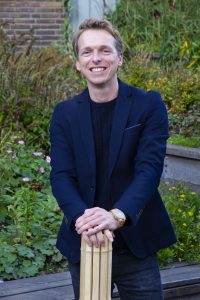
Speaker: Pablo van der Lugt, Technical University Delft, The Netherlands
TED speaker and architectural engineer Pablo van der Lugt (MSc PhD) is senior sustainability consultant in the wood- and bamboo industry as well as senior lecturer biobased building at Delft University of Technology (Environmental Technology & Design) and AMS Institute. Furthermore, he responsible for sustainability at MOSO Bamboo Products. He is the author of 5 books on biobased building, including Tomorrow’s Timber (2020) and Booming Bamboo (2017), besides dozens of articles in scientific journals and popular magazines.
Wood has attracted the attention of designers and specifiers as a sustainable building material that would reduce the environmental footprints of building construction. Although bamboo possesses similar material properties to wood and with even more favourable environmental benefits due to its much shorter rotation time, use of bamboo in building construction has not attracted a high level of interest due to a number of reasons. A primary reason for the lack of use in building construction is the difficulty in processing raw bamboo culm into a form that can easily facilitate construction. The advent of new adhesives and manufacturing technologies has led to a new generation of engineered bamboo products, such as laminated veneer bamboo and parallel strand bamboo, that could be used interchangeably with engineered wood products. Building construction is highly regulated. For any new products to be accepted in building construction, there is need to demonstrate conformance to the regulations imposed by Authority Having Jurisdiction (AHJ). A prerequisite for conformance demonstration is the availability of products and design standards. ISO Technical Committee 165 ‘Timber Structures’ has been playing a key role in the development of international standards for bamboo products that are intended for structural applications and related structural design standards since the 2000’s. International standardization allows for harmonization of national standards and facilitates international trade. This presentation presents the suite of products and design standards on bamboo products that are currently under development or have been published under the auspices of ISO TC 165, and provides recommendations on potential new standards.
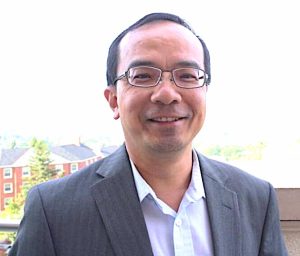 Speaker: Y. H. Chui, University of Alberta, Canada
Speaker: Y. H. Chui, University of Alberta, Canada
Dr. Ying-Hei Chui is currently Professor and NSERC Industrial Research Chair in Engineered Wood and Building Systems in Department of Civil and Environmental Engineering at University of Alberta. Prior to joining the University of Alberta, he was New Brunswick Innovation Research Chair in Advanced Wood Products and Director of the Wood Science and Technology Centre at the University of New Brunswick. Dr. Chui is one of Canada’s leading experts in the field of timber engineering, specializing in engineered wood products, dynamic behaviour of timber structures, non-destructive evaluation and timber connections. He has over 30 years of research experience and published over 200 articles in refereed journals and conference proceedings in these disciplines. Dr. Chui is actively engaged in building code and design standard development in North America and at the international level. He is currently member of a Standing Committee of Structural Design of the National Building Code of Canada, and a number of CSA technical committees on design of timber structures and wood products. He also chairs ASTM Technical Committee D.07 ‘Wood’ and ISO Technical Committee 165 ‘Timber structures’.
No single building type or material will allow us to build our way out of our climate and decarbonization challenges. We need to re-use and renovate what we already have and when we do build new, we need to work with each material for what it does best, creating hybrid building solutions that optimize at every turn. The presentation will explore the use of bamboo fibers in engineered wood products and composite construction, showcasing where bamboo can play a bigger part in creating a lower carbon built environment.
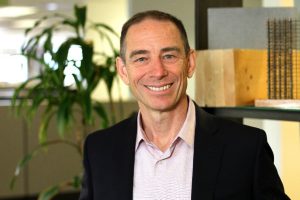
Speaker: Donald Davies, Magnusson Klemencic Associates, USA
Don Davies is President of Magnusson Klemencic Associates (MKA), a 185-person, award-winning, structural and civil engineering firm founded in 1920 and headquartered in Seattle. His 35 years of MKA projects include towers as tall as 105 stories and located in more than 19 countries and 50 major metropolitan centers.
An industry champion for the promotion of urban density, sustainable design, and low-carbon construction, Don has helped found the MKA Foundation, the Carbon Leadership Forum and BuildingTransparency. He is also a Senior Fellow of the Design Futures Council, and has been inducted into the UC Berkeley Academy of Distinguished Alumni
If the Earth were the size of a basketball, our atmosphere would be the thickness of a soap bubble film
I started Bamboo Living as an alternative to cutting trees. Linda Garland recommended to me that we focus on making higher end buildings to lift the social perception of bamboo in the developing world. Her point was that to develop its full potential bamboo needed to become an aspirational material especially in parts of the world where it was considered the “Poor Man’s Timber”. I lived in Hawaii and Hawaii has been an aspirational place: Paradise, Heaven on Earth. I set out to express as best I could the natural beauty of the bamboo and develop it as an epitome for life in a Tropical Paradise. We developed an A List of clients including the Rockstar Sammy Hagar and the Academy Award Winning actress Barbara Hersey among others. We used the whole pole and kept the natural look of the bamboo as best we could. The uniqueness of each pole adds to the uniqueness of each of the Bamboo Living structures. However, that uniqueness adds complexity to the structural analysis and the fabrication.
In 2009 I presented a paper at the World Bamboo Congress in Bangkok on how bamboo could be used to address climate change. Dr. Walter Liese presented a paper that year on why bamboo as it was then being used was not a good solution to address our changing climate. Dr. Liese was kind enough to meet me in Bangkok ahead of the conference to help me work out a strategy using bamboo that would be effective in addressing our climate crisis. The critical elements were that mature bamboo plants need to be harvested regularly at a sustainable level to keep their sequestration high and that the harvested material needs to be turned into durable goods with very long lifetimes, like building materials, providing long term storage of the atmospheric carbon.
I came away from that conference assured that bamboo has a significant role to play in addressing the climate crisis. However what was clear to me is that bamboo’s use will need to be ubiquitous for the plant to fulfill that role. Construction is one of the most conservative industries on the planet driven I believe by our human herd mentality: most people want what their neighbors want. The look of the vast majority of buildings changes only slowly through time. Fashion does impact buildings but trends run in decades instead of seasons. Engineered bamboo provides the opportunity to set new fashion trends based on its beauty and sustainability but to optimize its impact bamboo will need to become essentially invisible chosen for its price along with its sustainable attributes.
Bamboo laminates and composites provide the means to overcome the complexity associated with the natural variations of the individual bamboo pole. Laminates and composites can provide the opportunity to express their beauty and put their sustainability on display but they also provide the opportunity for bamboo to become invisible. That invisibility along the development of large scale supply chains are necessary for bamboo to play a large role reversing climate change and bringing us back to a stable atmosphere. That is the role of RIZOME.

Speaker: David Sands, Bamboo Living/rizome, USA
Founder, Director and Chief Product Officer for RIZOME
Founder and Chief Architect for BAMBOO LIVING:
- Developed the first US building code standard for structural bamboo
- Completed hundreds of residential structural bamboo projects over 26 years
Former Chairman, KRIPALU Center for Yoga and Health:
- Largest yoga retreat facility in the US
Featured on Discovery Channel: Building Off the Grid: Hawaii Bamboo House
National AIA Convention speaker - American Institute of Architects
World Bamboo Congress speaker
Brazil, Colombia and Mexico Bamboo Congresses speaker
American Bamboo Society National Convention speaker
World Bamboo Ambassador
Former President of AIA Maui
Licensed Architect: Hawaii
Masters of Architecture, University of Florida
Eagle Scout
To address climate change, we need to move away from legacy forms of concrete and steel, which will put additional pressure on the earth's limited wood resources. By changing the material mix to include engineered timber bamboo, we can optimize the fiber source and performance in structural designs thereby reducing the demand for wood. Changing the material can then lead to changes in methods that further address global construction pain points including labor, waste, time and cost.
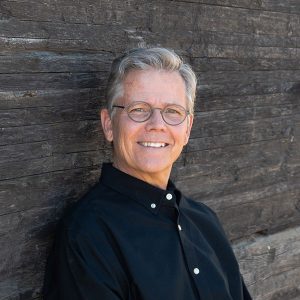
Speaker: Hal Hinkle, Bamcore, USA
Hal is the CEO of BamCore and its parent Global Bamboo Technologies, Inc. He was introduced to BamCore first in 2014 when building a home in Sonoma County, CA. That led to a deep dive into understanding timber bamboo’s unique growth and use potentials. Following his initial investments in BamCore, he assumed the leadership of BamCore in January 2017 and built the team that is taking BamCore forward on its mission to lower the carbon, cost, and labor now going into the built world. During his 22 years at Goldman Sachs, Hal successfully started multiple businesses. After Goldman, he started and successfully sold BrokerTec Global. In 2004, Hal established the Hinkle Charitable Foundation to advocate for cultural and climate mitigation causes. In 2021, he also established the World Bamboo Foundation to specifically advocate for the recognition of timber bamboo as a powerful tool to address both climate change and mitigate global rural poverty. He holds a BS degree (with Dean’s Honors) in biochemistry from UC Irvine, an MBA (Beta Gamma Sigma) from Columbia Business School and MS, MPhil, and Ph.D. degrees from Columbia Medical School. While at Columbia Medical School, he was selected by the National Science Foundation as a Graduate Research Fellow.
Lamboo’s focus is to grow awareness of architectural-grade building products in the US design and building market. One of the biggest challenges that we have faced in awareness in the market that these products exist and can be used in a multitude of building applications. Lamboo has been pioneering the industrialization of engineered bamboo products here in the US for the last 10 years and is becoming more and more successful based on our approach to the market.

Speaker: Jeran Hammann, Lamboo, USA
I have enjoyed working in the growth and profitability of manufacturing and product supply markets for over 25+ years. My current company, Lamboo, is the next generation of building products utilizing one of the planets most rapidly renewable building material, bamboo. Over the last 10 years, I and my team have been able to develop “First to Market” products utilizing laminated engineered bamboo (Lamboo) that provide key solutions to sustainable building applications. With my continued focus on sustainable building endeavors, I and my team look forward to the continued challenges and successes to come with Lamboo.
Wednesday May 18, 2022
08:00 - 11:00 Pacific Time
Research (updates on latest research results and innovative ideas)
Co-Chairs: Susanne Lucas & Cherla Sastry
While mitigating poverty, climate change and timber shortage, engineered bamboo can be developed similarly to engineered wood products for modern building constructions. However, due to its unique structural and material properties, bamboo cannot be processed in the same manner as its wood counterpart. This presentation will provide comparative analyses of processing and performance characteristics of engineered bamboo and wood products. Material science and engineering insights pertaining to bamboo bonding, element conversion, mat forming and pressing operations are elaborated. Knowledge gaps and future research opportunities for developing sustainable construction bamboo products will also discussed.
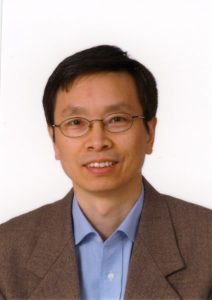
Speaker: Chunping Dai, University of British Columbia, Canada
Chunping Dai graduated from The University of British Columbia (UBC) with a Ph.D in Wood Science and Nanjing Forestry University with B.Sc in Wood Science and M.Sc in Forest Engineering. Professor Dai currently teaches and leads a research program in wood and bamboo composites in Department of Wood Science, UBC. Before joining UBC, he was a long-time principal scientist at FPInnovations where he conducted industrial research on engineered wood products. He has developed a series of computer models and several manufacturing technologies for the Canadian wood products industry. He is an author of over 250 technical publications and is a fellow of the International Academy of Wood Science
The bamboo that is processed to make engineered products such as ‘glubam’, LVB and CLB requires material characterization. It has been shown that ‘equivalent’ engineered bamboo materials have constituent materials having quite different quality. Furthermore, the assumption of random distribution of strips (and by implication, flaws) within an engineered bamboo product is shown to not necessarily be valid. This presentation emphasises the need for good materials characterisation, and grading, of bamboo prior to its inclusion in engineered products. By characterising bamboo in this manner, more efficient use of ‘feedstock’ is possible and grades of engineered bamboo may result.

Speaker: Kent A. Harries, University of Pittsburgh, USA
Kent A. Harries is a Professor of Structural Engineering and Mechanics at the University of Pittsburgh. He received his doctorate from McGill University in 1995. Harries’ research interests include the use of nonconventional materials in civil infrastructure – ranging from FRP to bamboo. Harries is a co-author of over 300 peer-reviewed articles and three books, is Senior Editor at the Journal of Construction and Building Materials and is co-editor of the book Nonconventional and Vernacular Construction Materials. Harries led the effort to revise ISO 22156 Bamboo Structural Design. Harries is a Fellow of ASCE, ACI and IIFC, and is a professional engineer in Ontario, Canada.
Bamboo in its natural form of the culm is a remarkable material in terms of its properties and the potential these properties bring, but in this form, it has limitations in integration with modern construction of buildings. However, in recent years methods of converting bamboo into engineered, normalised sections have begun to achieve success on a structural scale. With the construction industry producing 40% of greenhouse gases and the consequential effect on climate change, fundamental change in methods of construction have to be sought. With the expanding success in developments of engineered bamboo and its unquestionable environmental benefit, this unlocks enormous potential for the construction industry to do just that.

Speaker: Neil Thomas, Atelier One
Neil Thomas is the Founder & Director of Atelier One, which has been described as ‘the most innovative Engineering Practice in the UK’.
In 2014 Neil was elected Royal Designer for Industry (RDI), an Honorary RIBA Fellowship for both the excellence and the inventiveness of his contribution to Architecture over the past 25 years and in 2015 was awarded Fellow of the Institute of Structural Engineers.
In 2016 Neil was honoured with an MBE on the Queen’s 90th Birthday for contributions to Architecture, Design and Engineering, and he received Milne Medal in 2019.
Since visiting Bali over 8 years ago, Neil has become more involved with the design and development of bamboo structures.
Neil is a regular lecturer at Bamboo U, an adjunct of the Green School - Bali, teaching the engineering principles behind bamboo design. He also holds a number of high-profile posts in the UK & US educational service, most recently being a Visiting Professor to Yale and MIT.
He recently wrote the Technical Appendix for Bamboo Contemporary, published by Princeton Press.
Bamboo-based materials are manufactured by gluing bamboo strips/stands together. However, most of the available bamboo products are not engineered bamboo composite (EBC). This presentation answers the question what is EBC, and, furthermore, to discuss the challenges and the solutions for EBC as a construction material. Stress grading and the associated mechanical properties of EBC are also provided. Achievements of EBC research and applications by the research team are summarized.
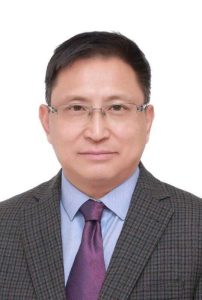
Speaker: Dongsheng Huang, NFU, China
Professor Huang Dongsheng, PhD and Eng., Graduated from Southeast University, China, and specialized in Civil Engineering. Before 2004, He took a position as structural engineer at China Real Estate Hefei Ltd. He was awarded the national top level structural engineer in 1998. After 2004, he joined Nanjing University of Aeronautics and Astronauts as a professor in the Department of Civil Engineering. In 2008, he took a position of professor at School of Civil Engineering, Nanjing Forestry University (NFU). He is currently the director of National Engineering Research Center of Biomaterials, NFU, and the president of SouthFOR Innovations, an institution of biomaterial and structure research. His research field covers wood/bamboo composites and structures, seismic prevention and vibration control. He has led more the 20 research projects supported by the central or provincial government, including 4 NSFC projects. He has published more than 130 papers and taken charge of over 100 building designs including 3 super-high-rise towers.
The fast pace of development in many developing countries has led to an increased demand for building and construction materials for housing and infrastructure projects. Reinforced concrete is one of the most widely used building materials around the world. Unfortunately, the majority of developing countries lack the resources to produce their own steel. Research that has been conducted so far in natural bamboo-reinforced structural concrete has demonstrated that replacing steel with bamboo as a reinforcement system is technically feasible but so far, no solution has been found for problems involving swelling, shrinking, chemical and biological decomposition and thermal expansion. The primary aim of this research is to evaluate the suitability of a newly developed engineered bamboo composite material for use as reinforcement for structural-concrete elements. Series of concrete beams reinforced with new material as longitudinal and transverse reinforcement were tested and they have shown ultimate failure loads that are comparable to that of reinforced concrete beams with ASTM graded steel-reinforcement bars. The research outcomes recommend that the newly developed reinforcement system to be used only for low-cost and low-rise concrete infrastructure where loading and environmental conditions similar to those studied in this research can be found.

Speaker: Alireza Javadian, KIT, Germany
Dr. Alireza Javadian has received his PhD in Architecture and Construction form ETH Zurich and his Masters degrees specialized in construction materials as well as structural engineering from NTU and NUS in Singapore respectively. Alireza is currently working on development of sustainable materials made from renewable resources such as bamboo, timber, agricultural waste and industrial by-products which can replace traditional and non-renewable materials mainly steel, concrete and synthetic polymers for applications in construction and interior design industry. He has received the distinguished award by Singapore government for his work on development of Bamboo Fiber Composite Materials for Construction on the 50th anniversary of Singapore independence in 2015. He has co-founded the Spin-off company Widuz to commercialize this technology in 2019 in Singapore. At Widuz he is focusing on further development of the technology while continuing the research and development works with leading institutes in Singapore and Europe and supporting the team on scaling up the process for commercialization. As part of his research activities, he is acting as the Head of Research at Chair of Sustainable Construction at Karlsruhe Institute of Technology (KIT) in Germany as well as Co-Principal Investigator of Urban-Biocycle research project at Future Cities Laboratory of Singapore-ETH Centre in Singapore.
Engineered bamboo has the potential to be used as the preferred structural material for residential and commercial buildings with low carbon footprints. Nevertheless, a full understanding of its structural performance during a fire is needed. This presentation showcases the outcomes of a comprehensive study conducted to understand the mechanical behaviour of bamboo (Phyllostachys pubescens species) at elevated temperatures. Experimental results on the bending capacity of laminated bamboo beams exposed to constant heat fluxes are also presented. Conclusions from this work provide tools to develop numerical models to predict the reduction of the strength and stiffness of engineered bamboo beams exposed to a fire on the tensile side. This study forms the basis for designing fire-safe bamboo structures.
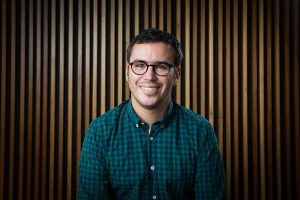
Speaker: Mateo Gutierrez, CLTP Tasmania, Australia
With a PhD in Structural and Fire Safety Engineering from The University of Queensland, Mateo’s main research interests are mechanical properties, fire performance, and timber and bamboo design.
Mateo has been working on timber and bamboo’s mechanical and physical properties as a load-bearing materials since 2010. He is one of the founding members of the SIBGUADUA research network. He is also a member of the Bamboo Construction Task Force coordinated by the INBAR, and the nominated expert by Standards Australia to participate in the Working group on Structural bamboo in the ISO Technical committee 165 for Timber structures. Mateo joined CLTP Tasmania/ CUSP in 2020. Since then, he has led the development of a range of structural engineered wood products such as CLT and GLT made out of plantation hardwoods available in Tasmania. His work has allowed these products to achieve high-quality manufacturing and performance certifications.
Thursday May 19, 2022
08:00 - 11:00 Pacific Time
Carbon emission and circular economy (why bamboo, carbon accounting, supply chain and economic modeling)
Co-Chairs: John Innes & Yiping Lou
The bamboo forest is characterized by significant carbon sequestration capability. It plays an essential role in mitigating climate change and global carbon cycling. Previous studies have focused on carbon cycling and carbon stocks in bamboo forest ecosystems. In contrast, the carbon footprints of bamboo products have received little attention. China is the largest exporting country of bamboo flooring in the world. Therefore, estimating the carbon footprint of bamboo flooring is of essential importance for the involved enterprises and consumers to evaluate their carbon footprints. This study investigated the production processes of bamboo scrimber flooring for outdoor use, a typical bamboo flooring in China. Based on the business-to-business (B2B) evaluation method, we assessed CO2 emission and carbon transfer ratio in each step of the production process, including transporting bamboo culms and producing and packing the products. We found that to produce 1 m3 of bamboo scrimber flooring, direct carbon emissions from fossil fuels while transporting raw materials/semi-finished products, from power consumptions during production, and indirect emissions from applying additives were 30.94 kg CO2 eq, 143.37 kg CO2 eq, and 78.34 kg CO2 eq, respectively. After subtracting the 267.54 kg CO2 eq carbon stocks in the product from the 252.65 kg CO2 eq carbon emissions derived within the defined boundary, we found that the carbon footprint of 1 m3 bamboo scrimber flooring was −14.89 kg CO2 eq. Our results indicated that the bamboo scrimber flooring is a negative carbon-emission product. This study provided a scientific basis for estimating carbon stocks and carbon footprints of bamboo products and further expanded knowledge on carbon cycling and the lifespan of carbon in the bamboo forest ecosystem.
Speaker: Tingting Mei
Photo and bio coming soon!
The world of GHG Emission accounting has exploded in not only the construction market, but the financial marketplace as well. So how do individual manufacturers, construction teams, designers, procurement teams, and AHJs keep up with the alphabet soup of what it all means.
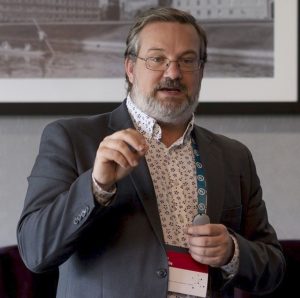
Speaker: Josh Jacobs, WAP Sustainability Consulting, USA
Josh is responsible for engaging and understanding the global marketplaces' sustainable/healthy rating systems, codes, purchasing policies, and standards for WAP Sustainability. In this role he helps develop and track the environmental programs that are being utilized throughout the world. As a LEED AP+ BD&C, Josh has served on over 40 sustainably focused committees, including but not limited to ASHRAE 189.1, LEED Steering Committee, USGBC’s Pilot Credit Committee, and served on the water/IEQ work group that developed the first public draft of the IgCC. He is a recurring guest lecturer at multiple universities and has spoken on sustainable building practices and purchasing on 5 continents. He works with organizations investor relations and sustainability teams to help them understand sustainable financial reporting tools such as SASB, GRI, and TCFD. Josh served as Chairman of the US Mirror Committee for ISO 20400 Sustainable Procurement, the 2015 NAHB Material/IEQ Working Group, Vice Chair for USGBC’s Pilot Credit Committee, USGBC’s LEED Steering Committee Chair and currently as Vice Chair of ASHRAE 189.1.
Bamboo is crucial for the O2-CO2 balance in the atmosphere as it releases 35% more oxygen than an equivalent tree stand and sequesters sizable CO2. However for success as engineered bamboo, the raw material has to be processed in various manual and industrial manners for successive value additions leading to the formation of value chain. Effective value chain management is key to the success of the enterprises whose long-term sustainability depends upon timely upgradation with innovations and improvisation for providing maximum values with least cost to the customers. Simultaneously, the catalytic role played by clustering of groups cannot be downplayed as significantly more innovation takes place in communities having stronger inter-personal networks. This paper examines how clustering of activities along with continuous upgrading of value chain leads to better feasibility of engineered bamboo and eventual long term sustainability in construction.

Speaker B.N.Mohanty, IPIRTI, India
After post-graduation in Geology Dr B N Mohanty joined Indian Forest Service (IFS) in the year 1986. His abiding interest in biodiversity conservation of tropical forest led to the award of Ph.D. on landscape level restoration of mined forest areas of north Odisha, India. During course of professional career, he got attracted towards two industrially important materials viz. plantation wood and bamboo for their immense potential to conserve natural forests on being processed as plywood and other value-added composites. For this purpose, his meticulous training in China Bamboo Research Centre, Hangzhou (Zhejiang province) on high-end bamboo products stood him in good stead. In this pursuit he took up the assignment of Director, Indian Plywood Industries Research and Training Institute (IPIRTI) for five years from October 2014 to June 2019. Here, he mentored a group of multidisciplinary scientists for the innovation of composite products like specialized plywood, particle boards, (Medium Density Fiber) MDF boards, (Laminated Veneer Lumber) LVL, glulam, oriented strand board, etc. from all sorts of lignocellulosic materials such as Agro-wood, bamboo, pine needle, bagasse, etc. The research out-puts were disseminated to industry houses for adoption and eventual commercialization. Till recently, he was serving as the Executive Body member of the international organization - Asia Pacific Association of Forest Research Institutes (APAFRI) with headquarters at Kuala Lumpur for five terms. He was associated with the technical committee of newly commissioned National Bamboo Mission of India for guidance on mass industrialization. He presented papers and chaired a few technical sessions on Bamboo Composites in Bamboo and Rattan Congress (BARC-2018) held by International Bamboo and Rattan Organization (INBAR) in Beijing. Further, he was invited to present on “Poverty Alleviation through utilization of Bamboo for High End Products: Case study from Kerala State, India” in 11th World Bamboo Congress held at Xalapa, Mexico. Furthermore, he presented paper in 3rd World Bamboo Workshop held at Imphal, Manipur in 2019 and organized successfully the much-acclaimed International Conference of 16 countries on Bamboo Composites at Bengaluru, India.
The construction sector is a major player in both the environmental challenges we face today and in the global economy. Buildings and infrastructures are essential for the sustainable development of any nation. Nevertheless, the current levels of extraction of raw materials and GHG emissions from production of cement and steel render any mineral based solution unsustainable. Moreover, bio-based materials not only have low energy intensity production but also have the capacity to store biogenic CO2. In this case Bamboo based construction materials can be used for multiple purposes from insulation to structural elements. The use of bamboo based construction materials both in raw and industrialized form have shown significant environmental savings potential in comparison to the use of conventional construction materials. Bamboo can be considered a truly regenerative material and can support the sustainable development of nations committed to its use.

Speaker: Edwin Zea Escamilla, ETH-Zurich, Switzerland
Dr. Edwin Zea Escamilla is Senior Assistant at the Chair for Sustainable Construction ETH Zürich. He focuses on the use of bamboo as strategy for regenerative development. He led the development of LCA datasets of bamboo-based construction materials and works on strategies for carbon accounting of fast-growing bio-based materials like bamboo. Edwin received his doctoral degree from the ETH Zürich in 2016. Edwin is member of the Bamboo Construction Task Force of the International Organization for Bamboo and Rattan and was appointed Topic Editor by the Journal Sustainability (MDPI) in 2019. He is a co-organizer of the International Symposium on Bio-Based materials and structures.
The use of bamboo in construction and agriculture is growing significantly in much of tropical Latin America, especially in Mexico, Ecuador, and Colombia. Demand for bamboo is generated from eco-touristic construction, disaster relief projects, low income housing, from use as bracing and scaffolding in the traditional concrete based construction industry, and also for agricultural stakes. Along with all the growth in demand, new North American bamboo manufacturers are seeking to develop supply chains from Latin America.
Carefully planned bamboo harvest and management strategies are required if bamboo is to live up to its potential as a rapidly regenerating crop and one that generates sustainable jobs for rural people. I will share my experience with bamboo farming, building and sourcing and the potential positive and negative impacts that an increased demand for Latin American bamboo can create.

Speaker: Lucas Oshun, Regeneration Field Institute, Ecuador
Lucas is the proprietor of Los Arboleros Farm, an agroforestry and bamboo operation in coastal Ecuador. Lucas also directs the Regeneration Field Institute, a bamboo construction, disaster relief, and agroecology organization launched after a 7.8 magnitude earthquake destroyed much of coastal Ecuador in 2016. As former director of international business development for Resource Fiber, Lucas developed a supply chain plan to meet an annual target volume of 1,000 40 ft containers of bamboo fiber. Ongoing Lucas works as a bamboo supply chain consultant and supports the efforts of NGOs and researchers in Ecuador related to questions of conservation, inventory and sustainable commercialization of bamboo.

Speaker: Tom Goodham, UFP Industries
Tom is the Biomass Project Manager for the Innovation Accelerator team at UFP Industries. An 18-year veteran of the building materials industry, Tom has overseen Product Development, R&D, Manufacturing Operations, and Office Operations Teams for Resource Fiber LLC, Trinity Bamboo LLC, and Teragren Fine Bamboo Flooring LLC.
The Industrial Revolution has radically transformed manufacturing technology in most sectors such as textiles, machinery, transportation and food processing. However, some building methods have remained unchanged in hundreds of years. The construction labour productivity has declined 19% over 50 years in the United State. This has driven an overhaul towards the adaptive construction practices in North America. An increasing proportion of construction work takes place off-site and under the more advanced and controlled conditions common in todays manufacturing, such as robotic assisted assembly. Recent demonstration projects at the University of British Columbia show that new methods and materials are required to increase productivity along the construction value chain. So, what can bamboo construction learn from these emerging and rapidly growing trends in North America? In this presentation, we will define levels of construction prefabrication, introduce the materials, design processes and equipment that enable prefabrication and showcase how easily bamboo can fit into this model. A case-study on affordable bamboo housing in Latin America will be presented to demonstrate that state-of-the-art prefabrication techniques are transferable to bamboo construction.

Speaker: Sol Rodriguez, The University of British Columbia, Canada
Sol is a bamboo and timber engineer at the forefront of the sustainable building revolution. He has worked in mass timber and bamboo projects in Canada, Mexico and the Caribbean. In 2020, Sol established a community-managed bamboo social housing project for NGO American Nicaraguan Foundation and Casa Congo Conservation in Nicaragua, a project partially funded by Hilti Foundation and Habitat for Humanity. Sol is currently enrolled in a MASc program in the Department of Wood Science at the University of British Columbia leading a multi-industry alliance project funded by Natural Sciences and Engineering Research Council of Canada focused on the creation of novel engineered bamboo-wood products for structural building applications in Canada.
Speakers

Y. H. Chui
University of Alberta
Dr. Ying-Hei Chui is currently Professor and NSERC Industrial Research Chair in Engineered Wood and Building Systems in Department of Civil and Environmental Engineering at University of Alberta. Prior to joining the University of Alberta, he was New Brunswick Innovation Research Chair in Advanced Wood Products and Director of the Wood Science and Technology Centre at the University of New Brunswick. Dr. Chui is one of Canada’s leading experts in the field of timber engineering, specializing in engineered wood products, dynamic behaviour of timber structures, non-destructive evaluation and timber connections. He has over 30 years of research experience and published over 200 articles in refereed journals and conference proceedings in these disciplines. Dr. Chui is actively engaged in building code and design standard development in North America and at the international level. He is currently member of a Standing Committee of Structural Design of the National Building Code of Canada, and a number of CSA technical committees on design of timber structures and wood products. He also chairs ASTM Technical Committee D.07 ‘Wood’ and ISO Technical Committee 165 ‘Timber structures’.

Chunping Dai
University of British Columbia
Chunping Dai graduated from The University of British Columbia (UBC) with a Ph.D in Wood Science and Nanjing Forestry University with B.Sc in Wood Science and M.Sc in Forest Engineering. Professor Dai currently teaches and leads a research program in wood and bamboo composites in Department of Wood Science, UBC. Before joining UBC, he was a long-time principal scientist at FPInnovations where he conducted industrial research on engineered wood products. He has developed a series of computer models and several manufacturing technologies for the Canadian wood products industry. He is an author of over 250 technical publications and is a fellow of the International Academy of Wood Science.

Donald Davies
MKA
Don Davies is President of Magnusson Klemencic Associates (MKA), a 185-person, award-winning, structural and civil engineering firm founded in 1920 and headquartered in Seattle. His 35 years of MKA projects include towers as tall as 105 stories and located in more than 19 countries and 50 major metropolitan centers.
An industry champion for the promotion of urban density, sustainable design, and low-carbon construction, Don has helped found the MKA Foundation, the Carbon Leadership Forum and BuildingTransparency. He is also a Senior Fellow of the Design Futures Council, and has been inducted into the UC Berkeley Academy of Distinguished Alumni.

Tom Goodham
UFP Industries
Tom is the Biomass Project Manager for the Innovation Accelerator team at UFP Industries. An 18-year veteran of the building materials industry, Tom has overseen Product Development, R&D, Manufacturing Operations, and Office Operations Teams for Resource Fiber LLC, Trinity Bamboo LLC, and Teragren Fine Bamboo Flooring LLC.

Mateo Gutierrez Gonzalez
CLTP Tasmania
With a PhD in Structural and Fire Safety Engineering from The University of Queensland, Mateo’s main research interests are mechanical properties, fire performance, and timber and bamboo design.
Mateo has been working on timber and bamboo’s mechanical and physical properties as a load-bearing materials since 2010. He is one of the founding members of the SIBGUADUA research network. He is also a member of the Bamboo Construction Task Force coordinated by the INBAR, and the nominated expert by Standards Australia to participate in the Working group on Structural bamboo in the ISO Technical committee 165 for Timber structures. Mateo joined CLTP Tasmania/ CUSP in 2020. Since then, he has led the development of a range of structural engineered wood products such as CLT and GLT made out of plantation hardwoods available in Tasmania. His work has allowed these products to achieve high-quality manufacturing and performance certifications.

Jeran Hammann
Lamboo
I have enjoyed working in the growth and profitability of manufacturing and product supply markets for over 25+ years. My current company, Lamboo, is the next generation of building products utilizing one of the planets most rapidly renewable building material, bamboo. Over the last 10 years, I and my team have been able to develop “First to Market” products utilizing laminated engineered bamboo (Lamboo) that provide key solutions to sustainable building applications. With my continued focus on sustainable building endeavors, I and my team look forward to the continued challenges and successes to come with Lamboo.

Kent A. Harries
University of Pittsburgh
Kent A. Harries is a Professor of Structural Engineering and Mechanics at the University of Pittsburgh. He received his doctorate from McGill University in 1995. Harries’ research interests include the use of nonconventional materials in civil infrastructure – ranging from FRP to bamboo. Harries is a co-author of over 300 peer-reviewed articles and three books, is Senior Editor at the Journal of Construction and Building Materials and is co-editor of the book Nonconventional and Vernacular Construction Materials. Harries led the effort to revise ISO 22156 Bamboo Structural Design. Harries is a Fellow of ASCE, ACI and IIFC, and is a professional engineer in Ontario, Canada.

Hal Hinkle
BamCore
Hal is the CEO of BamCore and its parent Global Bamboo Technologies, Inc. He was introduced to BamCore first in 2014 when building a home in Sonoma County, CA. That led to a deep dive into understanding timber bamboo’s unique growth and use potentials. Following his initial investments in BamCore, he assumed the leadership of BamCore in January 2017 and built the team that is taking BamCore forward on its mission to lower the carbon, cost, and labor now going into the built world. During his 22 years at Goldman Sachs, Hal successfully started multiple businesses. After Goldman, he started and successfully sold BrokerTec Global. In 2004, Hal established the Hinkle Charitable Foundation to advocate for cultural and climate mitigation causes. In 2021, he also established the World Bamboo Foundation to specifically advocate for the recognition of timber bamboo as a powerful tool to address both climate change and mitigate global rural poverty. He holds a BS degree (with Dean’s Honors) in biochemistry from UC Irvine, an MBA (Beta Gamma Sigma) from Columbia Business School and MS, MPhil, and Ph.D. degrees from Columbia Medical School. While at Columbia Medical School, he was selected by the National Science Foundation as a Graduate Research Fellow.

Dongsheng Huang
Professor Dongsheng Huang, PhD and Eng., Graduated from Southeast University, China, and specialized in Civil Engineering. Before 2004, He took a position as structural engineer at China Real Estate Hefei Ltd. He was awarded the national top level structural engineer in 1998. After 2004, he joined Nanjing University of Aeronautics and Astronauts as a professor in the Department of Civil Engineering. In 2008, he took a position of professor at School of Civil Engineering, Nanjing Forestry University (NFU). He is currently the director of National Engineering Research Center of Biomaterials, NFU, and the president of SouthFOR Innovations, an institution of biomaterial and structure research. His research field covers wood/bamboo composites and structures, seismic prevention and vibration control. He has led more the 20 research projects supported by the central or provincial government, including 4 NSFC projects. He has published more than 130 papers and taken charge of over 100 building designs including 3 super-high-rise towers.

Josh Jacobs
WAP Sustainability Consulting, USA
Josh is responsible for engaging and understanding the global marketplaces' sustainable/healthy rating systems, codes, purchasing policies, and standards for WAP Sustainability. In this role he helps develop and track the environmental programs that are being utilized throughout the world. As a LEED AP+ BD&C, Josh has served on over 40 sustainably focused committees, including but not limited to ASHRAE 189.1, LEED Steering Committee, USGBC’s Pilot Credit Committee, and served on the water/IEQ work group that developed the first public draft of the IgCC. He is a recurring guest lecturer at multiple universities and has spoken on sustainable building practices and purchasing on 5 continents. He works with organizations investor relations and sustainability teams to help them understand sustainable financial reporting tools such as SASB, GRI, and TCFD. Josh served as Chairman of the US Mirror Committee for ISO 20400 Sustainable Procurement, the 2015 NAHB Material/IEQ Working Group, Vice Chair for USGBC’s Pilot Credit Committee, USGBC’s LEED Steering Committee Chair and currently as Vice Chair of ASHRAE 189.1.

Alireza Javadian
Dr. Alireza Javadian has received his PhD in Architecture and Construction form ETH Zurich and his Masters degrees specialized in construction materials as well as structural engineering from NTU and NUS in Singapore respectively. Alireza is currently working on development of sustainable materials made from renewable resources such as bamboo, timber, agricultural waste and industrial by-products which can replace traditional and non-renewable materials mainly steel, concrete and synthetic polymers for applications in construction and interior design industry. He has received the distinguished award by Singapore government for his work on development of Bamboo Fiber Composite Materials for Construction on the 50th anniversary of Singapore independence in 2015. He has co-founded the Spin-off company Widuz to commercialize this technology in 2019 in Singapore. At Widuz he is focusing on further development of the technology while continuing the research and development works with leading institutes in Singapore and Europe and supporting the team on scaling up the process for commercialization. As part of his research activities, he is acting as the Head of Research at Chair of Sustainable Construction at Karlsruhe Institute of Technology (KIT) in Germany as well as Co-Principal Investigator of Urban-Biocycle research project at Future Cities Laboratory of Singapore-ETH Centre in Singapore.
Tingting Mei
Photo and bio coming soon!

Braja Narayan Mohanty
After post-graduation in Geology Dr B N Mohanty joined Indian Forest Service (IFS) in the year 1986. His abiding interest in biodiversity conservation of tropical forest led to the award of Ph.D. on landscape level restoration of mined forest areas of north Odisha, India. During course of professional career, he got attracted towards two industrially important materials viz. plantation wood and bamboo for their immense potential to conserve natural forests on being processed as plywood and other value-added composites. For this purpose, his meticulous training in China Bamboo Research Centre, Hangzhou (Zhejiang province) on high-end bamboo products stood him in good stead. In this pursuit he took up the assignment of Director, Indian Plywood Industries Research and Training Institute (IPIRTI) for five years from October 2014 to June 2019. Here, he mentored a group of multidisciplinary scientists for the innovation of composite products like specialized plywood, particle boards, (Medium Density Fiber) MDF boards, (Laminated Veneer Lumber) LVL, glulam, oriented strand board, etc. from all sorts of lignocellulosic materials such as Agro-wood, bamboo, pine needle, bagasse, etc. The research out-puts were disseminated to industry houses for adoption and eventual commercialization. Till recently, he was serving as the Executive Body member of the international organization - Asia Pacific Association of Forest Research Institutes (APAFRI) with headquarters at Kuala Lumpur for five terms. He was associated with the technical committee of newly commissioned National Bamboo Mission of India for guidance on mass industrialization. He presented papers and chaired a few technical sessions on Bamboo Composites in Bamboo and Rattan Congress (BARC-2018) held by International Bamboo and Rattan Organization (INBAR) in Beijing. Further, he was invited to present on “Poverty Alleviation through utilization of Bamboo for High End Products: Case study from Kerala State, India” in 11th World Bamboo Congress held at Xalapa, Mexico. Furthermore, he presented paper in 3rd World Bamboo Workshop held at Imphal, Manipur in 2019 and organized successfully the much-acclaimed International Conference of 16 countries on Bamboo Composites at Bengaluru, India.

Lucas Oshun
Los Arboleros Farm
Lucas is the proprietor of Los Arboleros Farm, an agroforestry and bamboo operation in coastal Ecuador. Lucas also directs the Regeneration Field Institute, a bamboo construction, disaster relief, and agroecology organization launched after a 7.8 magnitude earthquake destroyed much of coastal Ecuador in 2016. As former director of international business development for Resource Fiber, Lucas developed a supply chain plan to meet an annual target volume of 1,000 40 ft containers of bamboo fiber. Ongoing Lucas works as a bamboo supply chain consultant and supports the efforts of NGOs and researchers in Ecuador related to questions of conservation, inventory and sustainable commercialization of bamboo.

Michael Ramage
Cambridge University
Prof Michael H. Ramage leads the Centre for Natural Material Innovation at Cambridge University and is Professor of Architecture and Engineering in the Department of Architecture and a Fellow of Sidney Sussex College, a Chartered Member of the Institution of Structural Engineers and a founding partner of Light Earth Designs. He studied geology and archaeology as an undergraduate, followed by architecture at MIT, and worked for Conzett Bronzini in Switzerland prior to teaching and getting a PhD at Cambridge. His research is focused on developing low-energy structural materials and systems in masonry, better housing in the developing world and large-scale high-rise buildings in engineered timber and bamboo through natural material innovation. He teaches, researches and designs buildings, and receives research funding from the Leverhulme Trust, the Engineering and Physical Sciences Research Council, the Royal Society, the British Academy, the Laudes Foundation, and industry.

Sol Rodriguez
University of British Columbia
Sol is a bamboo and timber engineer at the forefront of the sustainable building revolution. He has worked in mass timber and bamboo projects in Canada, Mexico and the Caribbean. In 2020, Sol established a community-managed bamboo social housing project for NGO American Nicaraguan Foundation and Casa Congo Conservation in Nicaragua, a project partially funded by Hilti Foundation and Habitat for Humanity. Sol is currently enrolled in a MASc program in the Department of Wood Science at the University of British Columbia leading a multi-industry alliance project funded by Natural Sciences and Engineering Research Council of Canada focused on the creation of novel engineered bamboo-wood products for structural building applications in Canada.

David E. Sands
Bamboo Living / Rizome
Founder, Director and Chief Product Officer for RIZOME
Founder and Chief Architect for BAMBOO LIVING:
- Developed the first US building code standard for structural bamboo
- Completed hundreds of residential structural bamboo projects over 26 years
Former Chairman, KRIPALU Center for Yoga and Health:
- Largest yoga retreat facility in the US
Featured on Discovery Channel: Building Off the Grid: Hawaii Bamboo House
National AIA Convention speaker - American Institute of Architects
World Bamboo Congress speaker
Brazil, Colombia and Mexico Bamboo Congresses speaker
American Bamboo Society National Convention speaker
World Bamboo Ambassador
Former President of AIA Maui
Licensed Architect: Hawaii
Masters of Architecture, University of Florida
Eagle Scout

Neil Thomas
Atelier One
Neil Thomas is the Founder & Director of Atelier One, which has been described as ‘the most innovative Engineering Practice in the UK’.
In 2014 Neil was elected Royal Designer for Industry (RDI), an Honorary RIBA Fellowship for both the excellence and the inventiveness of his contribution to Architecture over the past 25 years and in 2015 was awarded Fellow of the Institute of Structural Engineers.
In 2016 Neil was honoured with an MBE on the Queen’s 90th Birthday for contributions to Architecture, Design and Engineering, and he received Milne Medal in 2019.
Since visiting Bali over 8 years ago, Neil has become more involved with the design and development of bamboo structures.
Neil is a regular lecturer at Bamboo U, an adjunct of the Green School - Bali, teaching the engineering principles behind bamboo design. He also holds a number of high-profile posts in the UK & US educational service, most recently being a Visiting Professor to Yale and MIT.
He recently wrote the Technical Appendix for Bamboo Contemporary, published by Princeton Press.

Pablo van der Lugt
TED speaker and architectural engineer Pablo van der Lugt (MSc PhD) is senior sustainability consultant in the wood- and bamboo industry as well as senior lecturer biobased building at Delft University of Technology (Environmental Technology & Design) and AMS Institute. Furthermore, he responsible for sustainability at MOSO Bamboo Products. He is the author of 5 books on biobased building, including Tomorrow’s Timber (2020) and Booming Bamboo (2017), besides dozens of articles in scientific journals and popular magazines.

Edwin Zea Escamilla
Sustainable Construction ETH Zürich
Dr. Edwin Zea Escamilla is Senior Assistant at the Chair for Sustainable Construction ETH Zürich. He focuses on the use of bamboo as strategy for regenerative development. He led the development of LCA datasets of bamboo-based construction materials and works on strategies for carbon accounting of fast-growing bio-based materials like bamboo. Edwin received his doctoral degree from the ETH Zürich in 2016. Edwin is member of the Bamboo Construction Task Force of the International Organization for Bamboo and Rattan and was appointed Topic Editor by the Journal Sustainability (MDPI) in 2019. He is a co-organizer of the International Symposium on Bio-Based materials and structures.

